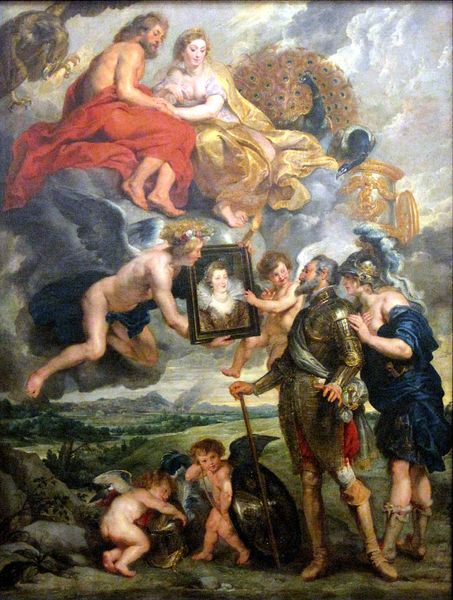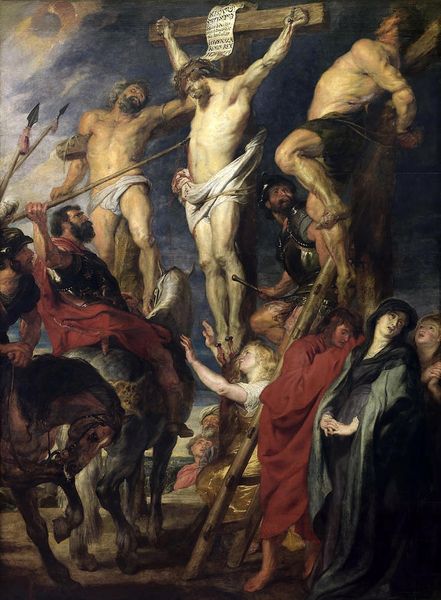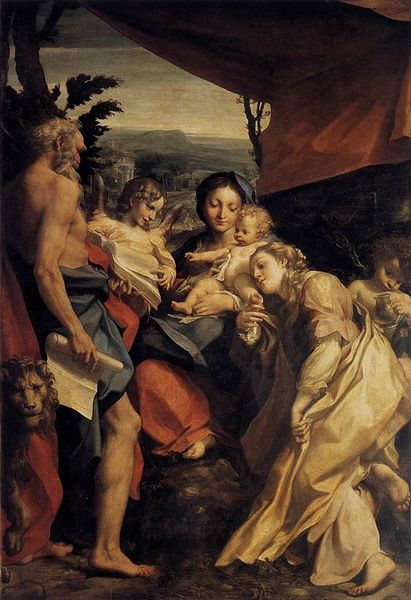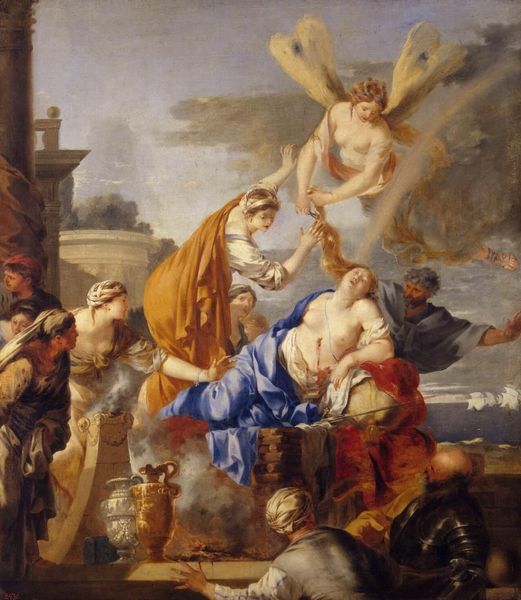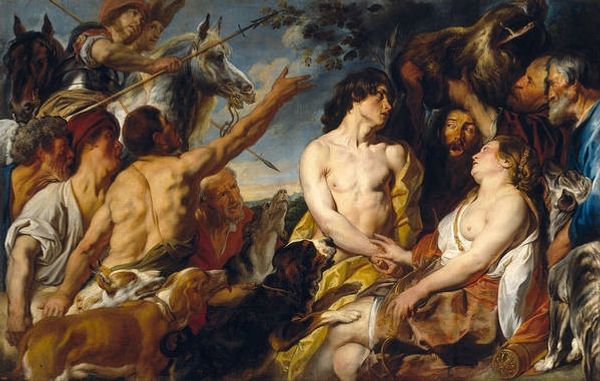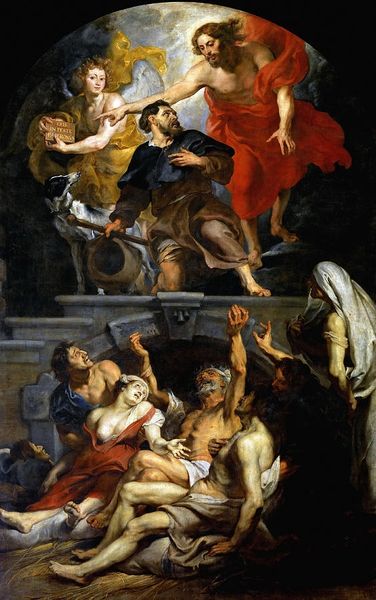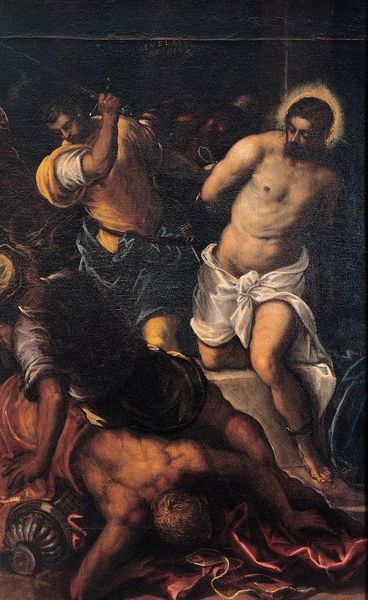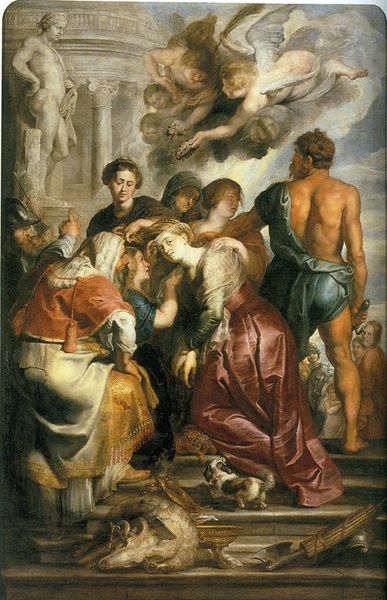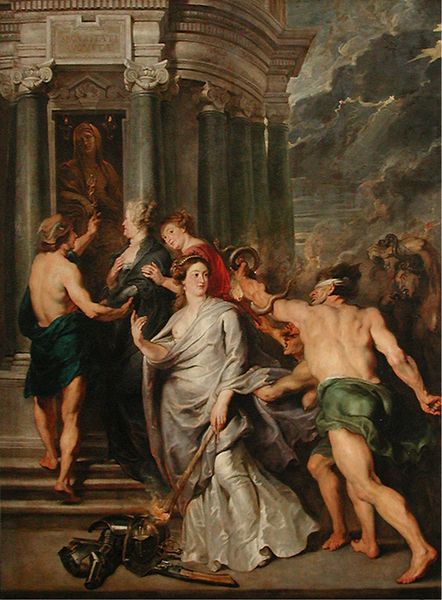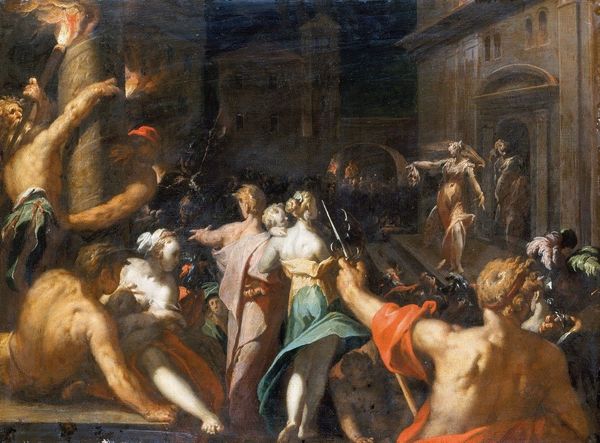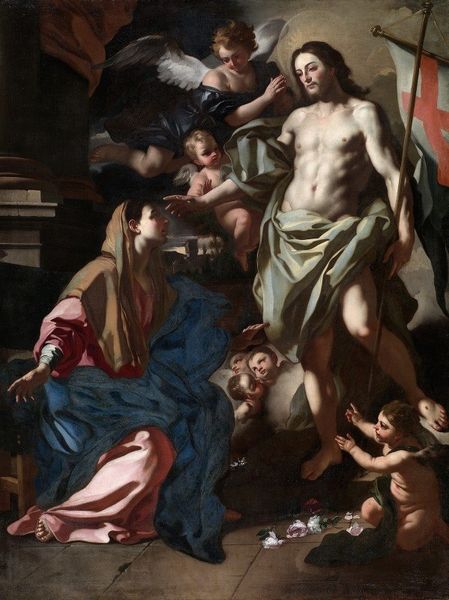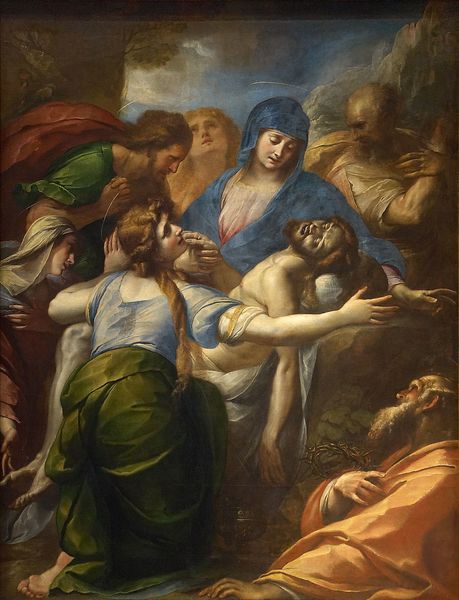
oil-paint, fresco
#
portrait
#
baroque
#
oil-paint
#
figuration
#
fresco
#
oil painting
#
christianity
#
history-painting
#
italian-renaissance
Copyright: Public domain
Editor: This is an oil painting titled "Martyrdom of Saint Lawrence" by Pietro da Cortona. The scene feels chaotic, but the composition, with its strong diagonals and play of light and shadow, really commands attention. What do you see when you look at this piece? Curator: Let us first observe how da Cortona employs the formal elements to construct meaning. Note the artist's use of dynamic diagonals. The orthogonals of the architectural backdrop converge at a vanishing point beyond the composition, enhancing the dynamism. The figures themselves form strong diagonal lines, contributing to the sense of heightened drama. Consider, too, the interplay of light and shadow. Light bathes the central figure of Saint Lawrence, drawing our eye to him and highlighting his expression. The dramatic chiaroscuro enhances the emotional intensity of the scene, but how? Editor: Well, it makes the scene more engaging; you really get the sense of torture being inflicted on the saint. But what I notice more is that it looks unfinished? Curator: The textural richness is evident, especially when viewed up close. It displays remarkable detail, which is further nuanced by the paint application; however, you also accurately point out an essential compositional problem. Indeed, there are regions where da Cortona left the canvas comparatively bare, creating a contrast between detailed sections and sketchier, less defined areas. The surface manipulation enhances its vitality. Consider its formal logic. Is it lacking definition or adding another dimension? Editor: It gives it this sense of implied motion… like we’ve caught a single moment, and it's still unfolding. I guess focusing on these techniques helps the overall emotional impact. Curator: Precisely. By observing da Cortona's visual language in Martyrdom, we unlock not only an understanding of artistic choices but also their profound impact. Now let’s further reflect how Baroque compositional techniques highlight narrative! Editor: I’m beginning to see more to Baroque art than dramatic theatrics. I am also fascinated by what isn't said; instead, only the dynamism, forms, composition and brush strokes do the storytelling.
Comments
No comments
Be the first to comment and join the conversation on the ultimate creative platform.
